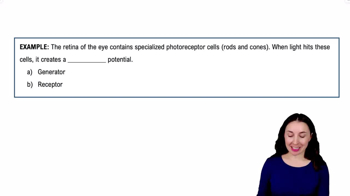Here are the essential concepts you must grasp in order to answer the question correctly.
Precentral Gyrus Function
The precentral gyrus, located in the frontal lobe of the brain, is primarily responsible for voluntary motor control. It contains the primary motor cortex, which sends signals to muscles to initiate movement. Damage to this area can lead to motor deficits, such as the inability to move limbs on the opposite side of the body, as seen in this patient.
Recommended video:
Contralateral Control
The principle of contralateral control refers to the brain's organization where one hemisphere controls the opposite side of the body. For instance, damage to the right precentral gyrus affects the left side of the body. This concept is crucial for understanding the patient's inability to move his left arm and leg following the hemorrhage.
Recommended video:
Control of the ANS Example 2
Sensory Pathways
Sensory pathways transmit information from the body to the brain, allowing for the perception of sensations such as touch, pain, and temperature. The right side of the brain processes sensory information from the left side of the body. Dysfunction in the precentral gyrus can disrupt these pathways, leading to a loss of sensation on the affected side, as indicated in the patient's symptoms.
Recommended video:
Organization of Sensory Pathways Example 1




